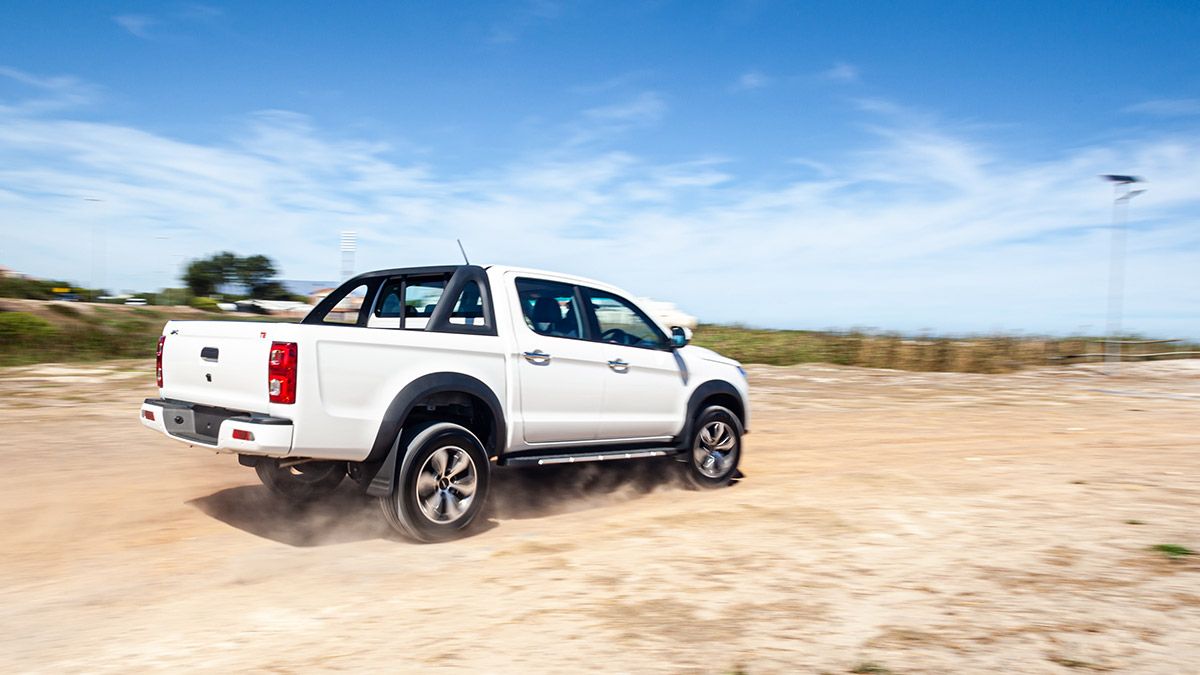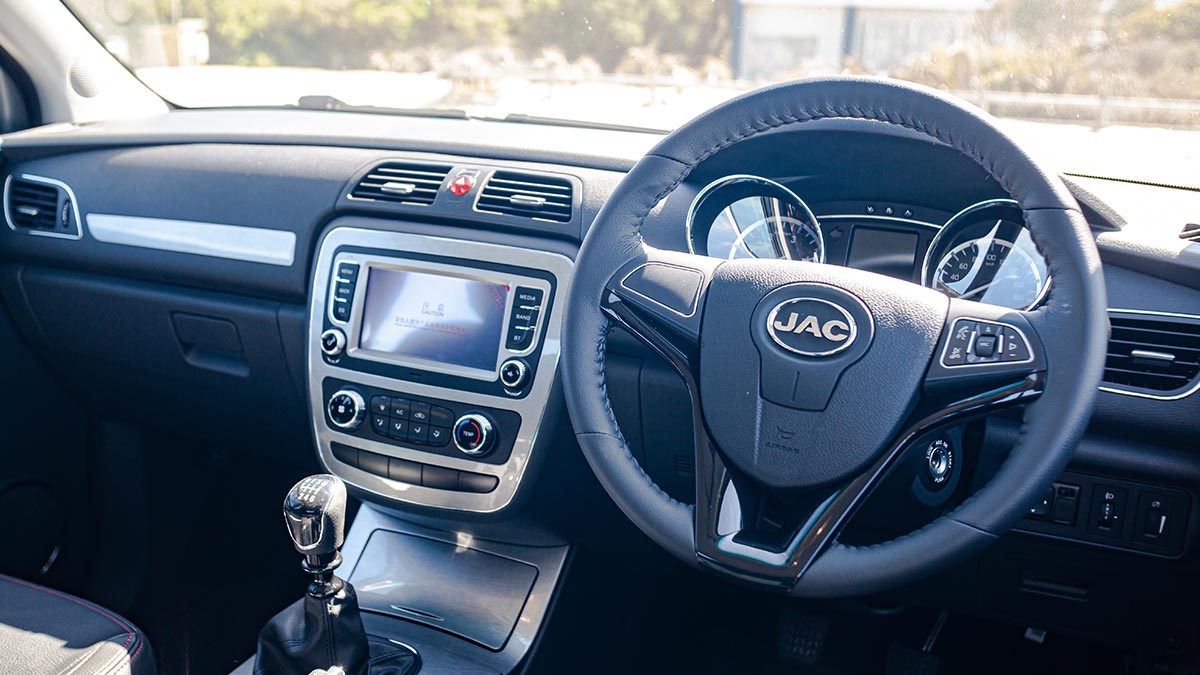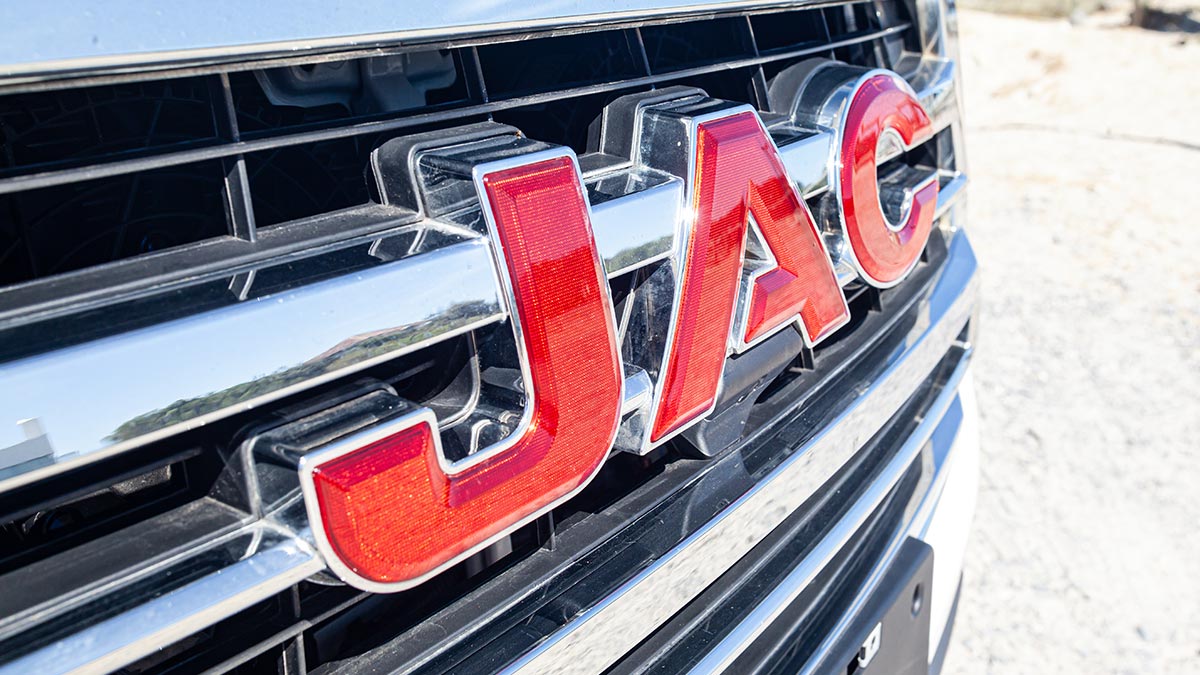The Jianghuai Automobile Company (JAC) may be almost unknown locally but the state-owned manufacturer is a giant in the Chinese auto industry and a prolific producer of electric vehicles. However, a recent slump in domestic sales sparked renewed efforts by the company to expand internationally, and it is now represented in more than 130 countries worldwide.
Last year the local subsidiary of JAC introduced the Shuailing T6 one-ton double cab pickup (also known as the Frison) locally, and its success here led to the stealth-like introduction of the latest and most modern contender in this market segment, the T8.
While based on the T6 the new T8 is positioned above its predecessor and is now the main contender of JAC in the high-end double cab pickup segment. Locally, two Lux variants, in 4×2 and 4×4 guise, are available. Offered the exclusive opportunity to review the new 4×2 derivative, we visited the manufacturing plant of Chinese electronics manufacturer Hi-Sense in Atlantis as part of our test route.

Design
Designed specifically to take on the latest pickup offerings from GWM, Foton, JMC, SAIC Maxus, BAIC, and BAW, as well as from Mitsubishi, Ford, and Toyota, the new T8 is about the same size as the current generation Hilux with a load bay measuring 1 520 mm by 1 520 mm, and it has some definite Hilux design traits too.
Its attractive lines combine the latest design elements from the international design centres of JAC in Italy and Japan, and its huge chromed hexagonal grille, Xenon-headlights, clamshell bonnet, LED tail lamps with a double-C pattern, and plain, yet strong waistlines impart the T8 with a robust and sturdy aura.
In terms of appearance (specifically with its attractive 18-inch alloy wheels), it need not stand back for any similar product from Japan or Europe, and build quality is also surprisingly good. The doors open and close with a solid clunk, the switches, buttons, and knobs are sturdy, and the interior plastics, while hard and inflexible to touch, are solid and seems quite resilient.

Equipment
In Lux form the T8 is also well-equipped, with a quite upmarket seven-inch touchscreen infotainment system including Bluetooth compatibility, a USB port and SD-card, sat-nav, tyre-pressure monitoring system, a reverse camera, dual airbags, and artificial leather seats as standard. Exterior amenities include a stylised roll bar and running boards.
Developed in combination with German company FEV the 1,9-litre, four-cylinder turbodiesel engine in the T8 delivers 100 kW and 320 Nm of torque that compares well with the performance figures of rivals such as the GWM Steed 6 (105 kW/305 Nm), JMC Vigus5 (103 kW/310 Nm), Mahindra Pik-Up S6 4×2 Karoo (103 kW/320 Nm), and Isuzu D-Max 250 Hi-Ride 4×2 (100 kW/320 Nm).
The common-rail engine with intercooler and Electrical Variable Geometry Turbocharger (EVGT) emits an Isuzu-like clatter at start-up and under load, it is very audible in the cabin. At steady speeds, it is less intrusive, but some extra sound-insulation can help to mask its racket.

On-road performance
At low revs the mill, while noisy, is eager and quite willing, pulling strongly from below 2 000 rpm. However, with its narrow power band, it runs out of grunt before 3 500 rpm, and this means constant changing of gears to ensure optimal pulling power. The first gear ratio is also indecently short, to aid acceleration from standstill.
Changing gears was no burden, though, as selection via the six-speed manual ’box is slick and quick – better than that of some of its much more fancied competitors – and the transmission of power to the rear wheels was smooth too, ensuring a relaxed driving experience.
This was further enhanced by the quite roomy cabin and comfortable, manually adjustable seats but, as can be expected from a pickup with leaf-sprung rear suspension and 210 mm ride height, ride quality was choppy, though well-suppressed, over undulations. For a one-ton bakkie, steering feel and accuracy was adequate and handling-wise it compared well with most class rivals.
So, in term of performance, the only real drawback on the T8 is its engine that runs out of breath too quickly. This impairs its overtaking ability and also saw us record a relatively high consumption figure of 10.1 ℓ/100 km (JAC claims 9 ℓ/100 km). However, this was in a very low-mileage vehicle.
The new T8 Lux 4×2 is competitively priced at R339 900, and this includes a five-year/150 000 km warranty and a five-year/60 000 km service plan. It compares well with the GWM Steed 6 DC 2.0 VGT XScape, available from R319 900, and the slightly lower spec JMC Vigus5 2.4 TDCi (R317 990), although some buyers may view the R20k difference as prohibitive.
Still, considering build quality, level of specifications, all-round capability, and price within the hugely competitive double cab bakkie market, the new JAC T8 makes high sense …
Text: Ferdi de Vos
Images: Ryan Abbott


